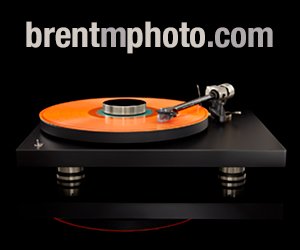Collective Agreement
March 11, 2018

Creative collectives are cooking up a culture shift, allowing independent artists to join forces. Whether it’s highlighting diverse voices, supporting passion projects or amplifying social issues, this new model of working shows there is power in numbers
Back in 1976, on a stoop in Staten Island’s projects, a collaboration was born between two eight-year-old cousins. With breakdancing and freestyling finding its footing in New York City, the group grew by adding varied musical artists and friends. Selling marijuana on the side, they would produce their work in dark basements, nightly. Fast forward to 1993 and the collective released its first record by handing out bootleg copies to local record companies, radio stations and anyone that will listen. The album was Enter the Wu-Tang (36 Chambers). The group was Wu-Tang Clan.
Wu-Tang Clan went on to define modern hip-hop culture—through a collective. They altered hip hop and our shared perspective of it. At its best, that’s what a creative collective does—it connects an audience to a group’s perspective to showcase authentic culture. To showcase art in a way the singular artist cannot.

From left: Popp Rok's Adam Palmer, Karena Evans, Taj Critchlow and Dean Rosen. Photo © Ryan Bolton
Cemented in Culture
“The creativity, the process and the art of it all is for fun,” Director X, real name Julien Christian Lutz, tells me. He’s talking about the production company he founded, a creative collective of directors and visual storytellers called Popp Rok. “We’re making stuff that the client is happy with, and it resonates with the audience because they’re getting something that speaks to them, and they can feel the purity.”
Director X has been creating culture-shifting hip-hop music videos since the late ’90s. One of his most recent joints, Drake’s “Hotline Bling” was an instant internet sensation with over 1.3 billion views on YouTube to date. It even has its own memes. He’s directed videos with heavy-hitter artists such as Usher, Jay-Z, Justin Bieber, Rihanna, Kendrick Lamar and members of Wu-Tang Clan.
Director X's video for Drake's "Hotline Bling"
Popp Rok has 18 directors signed to its roster. They’re young. They’re diverse. And they’re hungry. And, best yet, they have the backing of Director X, one of the most acclaimed music video directors of his generation. “They do great, great work on all levels,” says Director X. “The performances. The lighting. Every aspect of the filmmaking looks terrific. That’s what we’re striving to do. And creating a roster of directors that we feel have that spirit about them, and the ability in them.”
“Popp Rok is an enabler for my creative expression,” says Karena Evans, 22, a rising director under the Popp Rok umbrella. “As a company, Popp Rok is at the forefront of delivering pop culture. But, more importantly, it provides a voice for—and tells stories that represent—all cultures, genders, races and sizes.”
Because the collective is a part of the culture it’s promoting in its hip-hop videos and commercial work for brands including Nike, Google and Virginia Black, there’s an authenticity that connects with the audience. The work represents its culture. Art reflects society.
What separates this collective from other production houses? “Understanding the power of music,” explains Taj Critchlow, executive producer at Popp Rok. “Understanding the power of culture. Understanding the power of youth. When we inject those experiences in our work…we’re giving you access to something you may not have access to.”
Employing varied directors with unique backgrounds is how Popp Rok stands out—storytellers that come from different milieus than the audience, than the industry standard. That’s what Popp Rok represents: The “pop” symbolizes visual storytellers of popular culture and the “rock” is the firmness and understanding of that culture.
“The bigger issue is there’s a lack of diversity,” says Critchlow of the current media landscape. “There’s a lack of culture and understanding, and it’s important to have storytellers and directors who come from different walks of life. If it’s race, if it’s gender, or sexual orientation, it’s important to have the individual as part of your team.”
Director X's video for French Montana's "Famous"
Breaking the Mould
In 2006, Sid Lee, the global creative agency, was undergoing a rebrand. For the first time, senior leaders invited all Sid Lee employees to add their touch to the agency’s rebranding exercise. Accountants. Coordinators. Didn’t matter. The participation came from across the globe, from Toronto to Paris. The response flabbergasted Sid Lee’s creative team.
“What that created was enormous collective energy where everyone was co-creating and being a part of the brand,” says Kristian Manchester, global executive creative director at Sid Lee. “From that electric vibe, we decided we should keep doing this and create a program to bring in people that weren’t in the creative department, [who] felt they could be a part of something bigger than themselves.” Sid Lee Collective was born.
Being part of the agency world can get stiff. It’s relentless. It’s a pane of glass being broken over your back, a million pieces flying through the air. There’s a constant need to stay fresh, to stay creative, to stay original.
With some 650 employees, Sid Lee keyed in on its power in numbers, understanding that culture-shifting ideas can come from anywhere. As part of Sid Lee Collective, any employee, no matter their position, is encouraged to pitch creative solutions. If the idea is green-lit, the employee gets to work on the project 10 per cent of their work hours. It’s a creative incubator for the staff’s passion projects, and the impact is profound.

Sid Lee Collective
Behind the scenes of Sid Lee Collective's collaborative self-promo video shoot
“We realized that we can be as out-there and creative as we want to be, but at the same time, moving change, creating progress and making a little bit of a dent definitely makes everyone feel good about work, beyond creative excellence,” says Manchester. “We’re working towards stuff that’s more socially conscious. Trying to create stuff that matters.”
The day after Donald Trump was elected president of the United States, Sid Lee Collective got to work. They wanted to spread a message of peace in a unique fashion. To disrupt culture and break a mould. They decided to hold the biggest Bed-in for Peace in Montreal. “It was the hangover remedy. Seemed like peace needed help,” Manchester quips.
Similar to its own rebrand, Sid Lee Collective invited creatives from across the globe to design Posters for Peace. They received over 400 submissions and printed a jury selection of 40 posters onto bed sheets.


Sid Lee Collective's Posters for Peace
On the International Day of Peace last year, across the street from the Fairmont Queen Elizabeth Hotel in downtown Montreal, Sid Lee Collective pulled off the bed-in with the public participating in the demonstration. The cultural parallel and message was apparent. It was in this very hotel, back in 1969, that John Lennon and Yoko Ono had their famous “bed-in” after being refused entry into the United States. They stayed in room 1742 of the Queen Elizabeth Hotel for a week—and it was in this room that they recorded the song “Give Peace a Chance.” All in all, it was a radical shift in how peaceful demonstrations could transpire.
Sid Lee’s Bed-in for Peace was originally conceived on a napkin. That’s part of the power of a collective. A creative solution can come from anywhere to redefine a moment, and send a cultural message. “An idea on a napkin that involved 20 people from Sid Lee from producers, animators, editors and designers,” says Manchester. “The outcome was probably our biggest collective success.”
From Isolation to Collective Impact
Being a professional photographer can be lonely. The hustle. The competition. Just you and the camera. Then, add in the business side of things, with no team to back you up for SEO, promotion, bookkeeping and constant social media outpouring.
“Photography and photojournalism in particular can sometimes be a little isolating, however being part of collective means you have a consistent group of colleagues to support you and bounce ideas off,” says Jennifer Roberts, a photographer with Rogue Collective, which is comprised of award-winning Canadian shooters. “We help one another with advice about how to approach different shoots, with direction, edits of long-term projects and even business matters.”
That’s why Jimmy Jeong founded Rogue in the first place. “Working as a freelancer, it sometimes feels like it’s just you against the world,” he says. “Being part of a collective means we can all contribute and take on part of the responsibilities. We also all take turns pulling each other up.”

Helena Bonham Carter and Kiefer Sutherland shot by Jennifer Roberts of Rogue Collective
It’s a common thread in a collective: being part of a squad changes the message. The all-female photography collective SOFIA (Society of Females in Art), which launched in 2014, is still finding its footing, but it’s clear in one thing: companionship helps not only the artist, but the idea.
“I think we were tired of working alone and working in silos all the time. [We were] just waiting for parties to see each other,” says Michelle Yee, a photographer with SOFIA. We’re chatting via Google Hangouts. It’s a common collaborative tool for collectives to share work, discuss concepts, critique and schedule shows. SOFIA members Brooke Wedlock, Kerry Shaw and Angela Lewis are also participating in the Hangout. Shaw continues the sentiment: “[In the early days] it was about connecting on personal work. And having a community. The beginning was really to connect more than anything.”

By Michelle Yee of SOFIA
Both Rogue and SOFIA have staged their own collective shows, but each approached the process differently. For SOFIA, the eight photographers got together and brainstormed. They put their collective ideas in a hat. They all agreed on the theme “Bad Behaviour.”
“All of us had different takes on those two words,” explains Wedlock. “I think that’s a really exciting part of SOFIA—to see eight women all having the same theme, but going in such different directions.” The show, curated by Report on Business director of photography Clare Vander Meersch, was part of the 2016 Scotiabank CONTACT Photography Festival.
Rogue Collective had its first group show in Toronto last year. All of the artists worked on the theme of “Outtakes.” Each member would submit their work to the collective. They curated the show together, a lot of the time via video conferencing.
“Because we’re spread across the country, and have a photographer in the United Arab Emirates, we have our all-members group meetings almost exclusively through online video conferences,” Roberts explains. “We also have a very active group chat where we’re always bouncing ideas around, providing advice and just generally supporting one another.”
SOFIA is working out what’s next. The exhibit was a success. The audience wants more. The group is honing its voice. They’re throwing ideas around. How about a mentorship program? What about a resource page for other women photographers? Starting a podcast? Holding workshops? Getting political? The collective is reaching a metamorphosis.
“[Are we] going to turn into a community?” Yee asks. “Are we going to build something from here that’s bigger than just the eight of us? By coming together, we have the opportunity to reshape the industry.”
Shaw continues the thought: “That feeling of being a part of the larger voice is something that has become immensely incredible. I think the connection we have with women all over the world—and men that want to support women—doesn’t feel so hard edged.”

By Jimmy Jeong of Rogue Collective
Power in Numbers
A creative collective gives you more perspective than you have as a singular artist. With more diverse members, you have more insight into culture and you can connect with an audience in a more authentic way. Every creative collective I spoke to, from music video collectives to agency collectives to photography collectives, said the same thing: A collective allows you to tap into a movement that is greater than the artist—if not to amplify a message, then to connect with a culture and tell a story.
“It’s bigger than a production company. I feel like I’m a part of a movement,” says Karena Evans of Popp Rok. “It feels like we’re change-makers. At least I’m trying to [be one] in this industry as a young, diverse female. We align in our ideals and it’s more than just a job. We’re telling stories and representing everybody.”
Karena Evans's video for SiR's "Summer in November"
Change starts with one idea. If the group believes in the idea, change can begin. “As an artist you can do excellent work and be renowned, but as a collective, you’re more efficient on producing meaningful experiences,” says Sid Lee’s Kristian Manchester. Sid Lee uses its collective to tap into culture in a way a traditional agency can’t. The collective “will always be that weird, rebellious little brother of Sid Lee,” says Manchester. “The one that might invent something you didn’t see coming.”
Some of today’s biggest PR blunders have been committed by companies that aren’t tapped into culture. Pepsi and its tone-deaf commercial starring Kendall Jenner ending a protest with a soda. H&M printing a racially charged shirt and putting it on children. And I’d be remiss if I didn’t include the Government of America as a whole. They’re all out of tune.
“We need to have diverse stories, because it’s the only way to educate not just ourselves, but future generations,” says Popp Rok’s Taj Critchlow. “It’s where we need to be as a society. We need to open up the spectrum. It’s not only going to be beneficial to us—it’s going to be beneficial to everybody…The world is better when it’s more colourful, and that’s what we want to bring.”
That’s where the collective comes into play. The shift has begun.
Ryan Bolton is a freelance writer and photographer.
For more imagery, scroll through the top slider.
This article was originally published in the Spring 2018 issue of Applied Arts.







